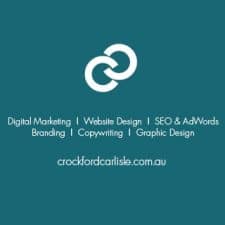
In this article, our focus is on your digital marketing strategy, and how the five key elements to a successful Sales Funnel fit together.
Why is a Sales Funnel so important for business growth?
A Sales Funnel is a way of breaking things down into bite sized chunks so that you can identify where there are opportunities to improve the effectiveness of your marketing strategy.
Rather than trying to deal with an impossibly huge question like: “How do I get more business?”, it enables you to drill down and look at each specific step people take as they progress towards making a purchase.
Looking at the big picture, the steps in your Sales Funnel are:
- Acquisition — generating initial interest through Google search, or via 3rd party referral sites.
- Engagement — converting traffic into solid leads to begin the relationship.
- Retention — Maintaining a connection with potential customers who are not yet ready to act immediately.
- Revenue — Converting as many enquiries as possible into a customer relationship.
- Referral — Generating referral and repeat business into the future.
By looking at each of these aspects individually and giving them the attention that they deserve, you can unearth opportunities that can give you a significant competitive advantage.
Let’s take a quick look at each of these sections and share some ideas for improvement that may apply to your business.
1. Acquisition
This is anything that brings people into the beginning of your sales funnel, which is your website.
It is important to remember the big picture; even though the focus is on digital marketing, there are other offline marketing activities that will also play a role in acquiring traffic through to your website. These include things like, direct mail marketing; TV, radio or newspaper ads; or even a well-designed brochure.
Right now though, we are talking about bringing people to your website, which is your Search Engine Optimisation (SEO) and Google Ads (PPC).
Attracting the right KIND of traffic
With both SEO and Google Ads, your keywords strategy is crucial.
When planning your SEO Keyword Strategy, we encourage you to remember focus on long-tail keywords, as they can be VERY profitable for you. With a well planned long-tail keyword strategy, (combined with a keyword map that focuses each page of your website correctly), you can attract traffic that consists of people who are pre-qualified and are seriously looking for the type of products and services that you sell.
The reason long tail searches are so important, is that the way people search on Google has changed in recent years.
Google has now taught people that they don't have to think too hard when they search. They just key in whatever they want to know, and Google will find the website with the answer.
And, that, right there, “find the website with the answer” is the clue for you with your SEO keyword strategy.
To capture the right kind of traffic, your website needs to be structured around the problems that people have, and the questions they are asking.
Get that right and:
- You will cast a much wider net in the search results
- You will catch people who are genuinely interested in what you have to offer and
- Your conversion rate will increase.
As well as your SEO strategy, to appear in Google’s organic search results you also need to think about how your Google Ads account is managed.
There is WAY too much to talk about here with Google Ads management, however one important point to remember is: test, test, test…and keep on testing!
- Test different angles.
- Test different offers.
- Test emphasising particular benefits of your service or products.
Use Google Ads testing to find out whether "fast turnaround" works better than "24 hour service". Or whether "highly qualified technicians" has more appeal than "family owned business".
With a well-managed Google Ads campaign, you can find out what your customers are really looking for, so you can focus all of your marketing in that direction.
2. Engagement
Once you've begun the process of bringing potential customers into your website, the next step in your sales funnel is engagement.
This is one area in which Crockford Carlisle’s website copywriters and graphic designers do a lot of work, because the content of too many sites is structured around "Here I am, come and buy from me because it suits me for you to do so." thinking.
That may be fine for "hot” prospects — those people who are absolutely ready to buy right now and are looking for the magic button — but what about those people who are still researching, still finding out, still not sure if they are ready to buy?
This is where you need to have action steps in place where they can begin the engagement process.
For example, if you are a builder who specialises in the renovation market, you could offer a free download of:
- "7 things you need to know BEFORE you begin renovating, to ensure you stay within budget."
Or, remembering what we said earlier about testing…
- “7 easily avoided (but very costly!) renovation mistakes, and how you can plan them out of your project”
The trick is to offer something that has high perceived value, so that the people you want to engage with are likely to think: “Hmm, I wouldn't mind getting that!”
To access the information, set the page up so that they have to give you their email address or postal address — and you can then begin the relationship.
One tip: Don't leave people guessing.
Ensure the first action steps are clearly articulated on your website. You need to tell them exactly what to do so they can get the benefits you are offering.
The next thing to think about is…
3. Retention.
It is one thing to get an enquiry. But what about the people who still aren't ready?
They've enquired but still aren't quite ready to hand over their hard earned money.
Think long-term. Have a follow-up marketing strategy in place to build your credibility.
For example, sending out case studies and success stories to them by email or post could be really helpful for them at that point.
- It will reassure them.
- It will show that you understand their problem.
- It will help them see how you can provide a good outcome for them.
Or, instead of a case study, send more tips that will help establish you as a thought leader.
We can't stress enough the importance of thinking long-term with this.
It doesn't hurt to follow people up repeatedly to ensure that you are in touch with them when the time comes for them to buy.
Your competitors may not be doing this and therefore you are more likely to be top of mind when decision-time rolls around.
Next we get to the good bit…
4. Revenue.
Even though this is what you’ve been waiting for, you’re not done just yet.
Before you start thinking about how much money you’re going to make, think long and hard about your customer service experience.
Companies that ask their customers relevant questions, and take the time to understand their problems and provide solutions will invariably be much better off than those who “take the money and run!”
Make things as easy as possible for customers. For example, if the purchase price of your product or service is significant, can it be bought in stages to make it more affordable?
And by the way, here’s another tip; if part of your process is to give people a quote, stop doing so immediately.
Send them a proposal instead.
- A quote focuses on price, so potential clients think in terms of "let me find the cheapest supplier".
- A proposal focusses on the value that you offer, which is a MUCH better argument.
Once you have made the sale, the next step is to think about…
5. Referral and repeat business.
You should be planning right away to get referral business.
You want to give people a good experience, so they will act as an advocate for you…and there really is no better – or cheaper – advertisement for your business than good ‘word of mouth’.
The last quick tip for referrals is to be upfront.
Before you've done business with someone, you could include a paragraph in your proposal that says something like: “I'm trusting that we'll do a really good job for you, and if you're happy with what we've done when this project is complete, I’d really appreciate it if you’d put me in touch with 2 or 3 people you know who could benefit from our service?”
Ask and you shall receive they say, so try it and see how many extra referrals you get!
Putting it all together
Getting your Sales Funnel sorted and systemised is very important.
If you need a hand to clarify your sales funnel, see where your opportunities are and put a plan in place to out-market your competitors, please give Crockford Carlisle a call on 07 3891 3800 and we’ll be glad to help!


















